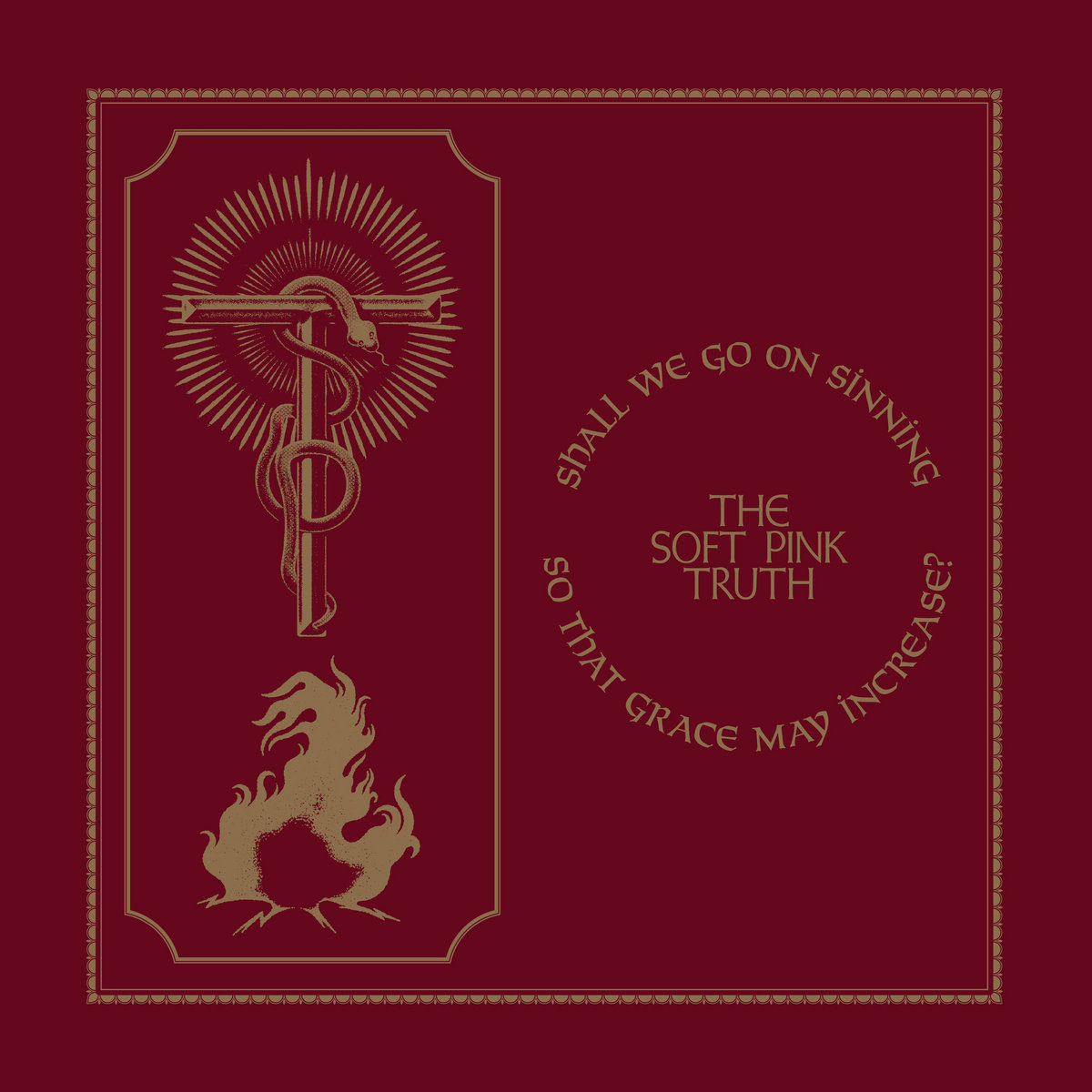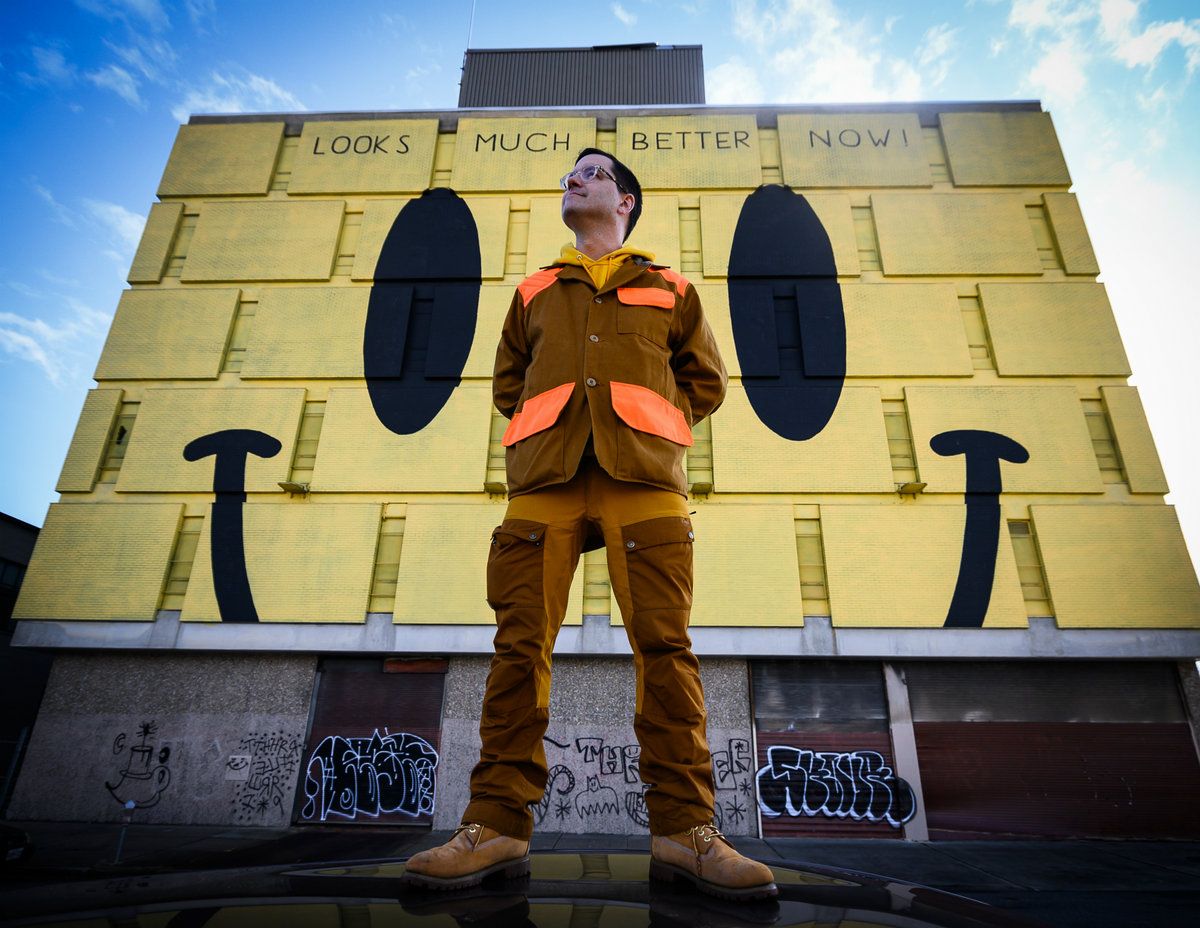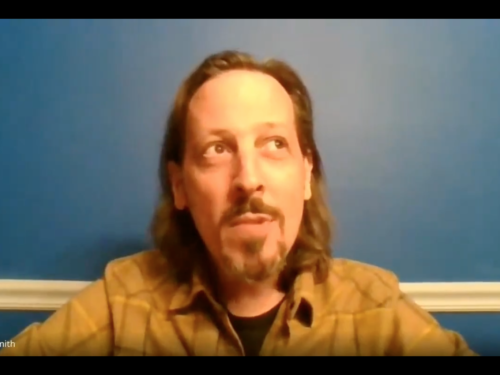With two new releases out under his Soft Pink Truth moniker, Daniel discusses making blissful art in dark days and the nostalgic cosplay of cover songs
A lot of people like Drew Daniel’s new album. His partner didn’t.
“I certainly tested Martin’s patience by endlessly playing him mixes of it,” says Daniel. “Finally he was like, ‘No more, I don’t want to hear this anymore, you got to stop.’”
That kind of bullshit detector is important for a romantic partnership that doubles as a musical partnership. Daniel and Martin “M.C.” Schmidt have been making heady, conceptual, idiosyncratic, and hilarious electronic music as Matmos since the mid-1990s. The Consuming Flame, the three-hour album they’re preparing to release this month, is one of their best works yet — but it’s been just as much of a banner year for Daniel’s solo project The Soft Pink Truth.
Shall We Go On Sinning So That Grace May Increase? is a radical departure from the demon voices, dirty jokes, and disco-fied covers of punk and metal songs that usually define the project. Shall We Go On Sinning is all gentle pianos, lightly tapped drums, and keening vocal harmonies from the all-star choir of Angel Deradoorian (Dirty Projectors), Colin Self, and Jana Hunter (Lower Dens).

PopMatters called Shall We Go On Sinning “the most impactful release” of his career, while British magazine The Quietus named it the best album of the year so far — to some mixed emotion from Daniel, who disdains the idea of ranking art through ordered lists. Certainly it’s the Soft Pink Truth release most likely to find an audience outside the experimental-electronic underground.
Yet even music fans with an ear keenly tuned to that world would be forgiven for missing the other Soft Pink Truth album released this year. Am I Free to Go?, a Bandcamp exclusive benefitting the International Anti-Fascist Legal Defense Fund, consists of nine covers of crust punk songs — plus a brief composition called “Space Formerly Occupied by An Amebix Cover But Fuck That Guy for Being a Holocaust Denier.”
Though Daniel hasn’t promoted Am I Free To Go? quite so much, the two works are in harmony with each other, each representing a different response to the end-of-the-world madness that’s defined the last five years. We caught up with Daniel to discuss the two albums, how they relate to each other, and the purpose of the Soft Pink Truth project in 2020.
Split Tooth Media: You’ve described Am I Free To Go? as a prequel to Shall We Keep On Sinning So That Grace May Increase? How do the two works relate to each other?
Drew Daniel: For me it was just like, how do I go on with The Soft Pink Truth now that Donald Trump is president? I didn’t want this sort of angry white-guy energy, because that’s what Trump’s whole shitty hateful-gesture persona is about. On the other hand, I felt like a purely aesthetic, pleasurable utopian statement was an act of denial. So I just felt very stuck as an artist.
I teach at Johns Hopkins University, and some grad students made it apparent that Hopkins had contracts with ICE. I was really disgusted and disappointed, and I got involved in creating a petition to end those contracts. It led to a lot of protests and walkouts and an occupation of the main administrative building, and eventually 80 cops were brought in and people were arrested. The more I thought about the politics of confrontation in those moments, the more a lot of the basic messages across punk music seemed to be confirmed. And so I started to think I would do a trilogy statement where I did the punk covers record [Do You Want New Wave or Do You Want the Soft Pink Truth?] and then the black metal record [Why Do The Heathen Rage?], and this’ll be the crust record and there’ll be a trio.
But it’s not enough. With covers, there’s a certain kind of nostalgic cosplay aspect to it. And so I started to make a different kind of music too, and that was the music that became Shall We Go On Sinning. That music was trying to imagine an alternative to the emotions of rage and despair that living in Trump’s America produced for me. It’s hard to talk about, because it sounds like you’re creating this emotional porn. It wasn’t like, “I want joy; therefore, these chords and these instruments.” It was kind of more sitting down playing certain phrases over and over as a way of calming myself down and dealing with emotion that way.

The reason that I call [Am I Free to Go?] a prequel is that I would rather have people move from Am I Free To Go? to Shall We Go On Sinning. And that’s why Am I Free To Go? ends with that version of “Protest and Survive” that focuses on Angel [Deradoorian]’s voice. Honestly, I feel like Shall We Go On Sinning is a more compelling piece of audio. They’re both works of art, but I guess I just think Shall We Go On Sinning was an experience I wanted more people to have. Am I Free To Go? is funny, and I hope it’s entertaining. I don’t want to pooh-pooh it, that’s not my goal. I think it’s just closer to what I was worried about doing, which was angry white-guy music.
What’s your relationship to crust punk?
When I was a hardcore kid, I loved the Misfits and I loved Pussy Galore and I loved Corrosion of Conformity. I wasn’t really listening to the intensely political crust punk — that was more in college — so I don’t want to front like this was the soundtrack of my childhood. I think I only heard crust when I started going out with Martin, because he knew about it. I knew kids who lived the crust life when I was a college student in Berkeley. I was going to [924] Gilman Street, so I would meet kids that were dumpster diving and they were anarchists and they lived it, which I didn’t. I’m a middle-class, bourgeois person. I’m not going to pretend that I have some crust ethos.
I think what’s challenging about the crust perspective is that it strips away middle ground in favor of a high-contrast world of conflict. There’s the capitalists and the government and the police and the system of work and money, and then there’s the ragged few who stand outside of the system and who are totally opposed to it. It’s appealing as a sort of romantic vision of refusal, but it has a high body count. After a while, are you going to starve to death? Are you gonna get addicted to drugs? Are you gonna wipe out, or are you going to find a way to live in an autonomous way? In the face of climate change, I feel like a lot of the crust political allegations are coming home to roost. What is climate change if not proof that all these crust punk slogans about a system that’s killing us, a system that is irreversibly driven towards extinction, are correct?
Related: Baths’ Cerulean At 10: “We’re Valid Now”
Do I listen to crust punk all day every day? No, but there are certain songs and certain records that I think are incredibly powerful. And if you think about D-beat as a pattern, it’s this incredibly simple rhythmic pattern that birthed this entire genre. I wanted a sort of analog to it in my own world, which would be the way that the Amen break created an entire world of drum ’n’ bass production around us. There’s kind of a whole universe inside that pattern, and I think that’s something that’s maybe shared between D-beat and drum ’n’ bass.
Do you see the Soft Pink Truth project continuing to explore different genres through covers?
I feel torn. I feel like covers are very dangerous, especially if you can’t sing. Maybe if I was Cat Power or something. I want to hear 12 covers albums by Cat Power, because Chan’s got an incredible voice, whereas my voice is barely acceptable without quite a lot of technological trickery and manipulation. I’m seriously pushing it to ever hold a microphone in front of my face, let alone to have made three covers albums. So there’s just like a hubris thing. I never say never, but I don’t think I’ll do another Soft Pink Truth covers album.
Related: Q&A: Lonnie Holley On ‘MITH,’ Improvisation And How Memories Lead To Art
Plus it was just so fun to make Shall We Go On Sinning that I thought maybe I should try to make my own music more. Making that record was really scary. Making melodic music or striving for a particular emotional outcome wasn’t something that I’d ever done in Matmos. It’s not typically something I do with The Soft Pink Truth either. Some of the people I played it for when I was working on it were like, “I don’t think so, man.” It was tough on me, but it was good because I kept working on it and remixing it and reworking it obsessively.
Tell me more about the balance of creating entrancing, positive, and blissful music without it being “emotional porn.”
I think formally what I wanted to have was moments of slight annoyance or extremity that would puncture the calm. A lot of Shall We Go On Sinning is supposed to be calming and beautiful, but the peaks are a little too much. That’s what that kind of “drop” moment on side two is about, where there’s this kind of like fast cut-up of voices that feels like a car alarm and is kind of annoying and kind of too much. I kind of think of it as the “car alarm in the yoga studio” moment. It’s the moment of conflict or interruption.
And I guess that’s my bad faith about ambient. I didn’t want to record something you could just put on and safely ignore for 20 minutes and it was just gonna tinkle like a water feature in a garden. I didn’t want the music to be an aggressive macho statement, but I didn’t want to be escapist either. And that’s just a hard formal challenge, and I tried the best I could to think about it. I wanted something that at a certain point was like, “you cannot look away from me.” To me, that’s because the world we’re in isn’t a world where you can just disappear into your bliss.
Follow Daniel and Split Tooth Media on Twitter
(Split Tooth may earn a commission from purchases made through affiliate links on our site.)




